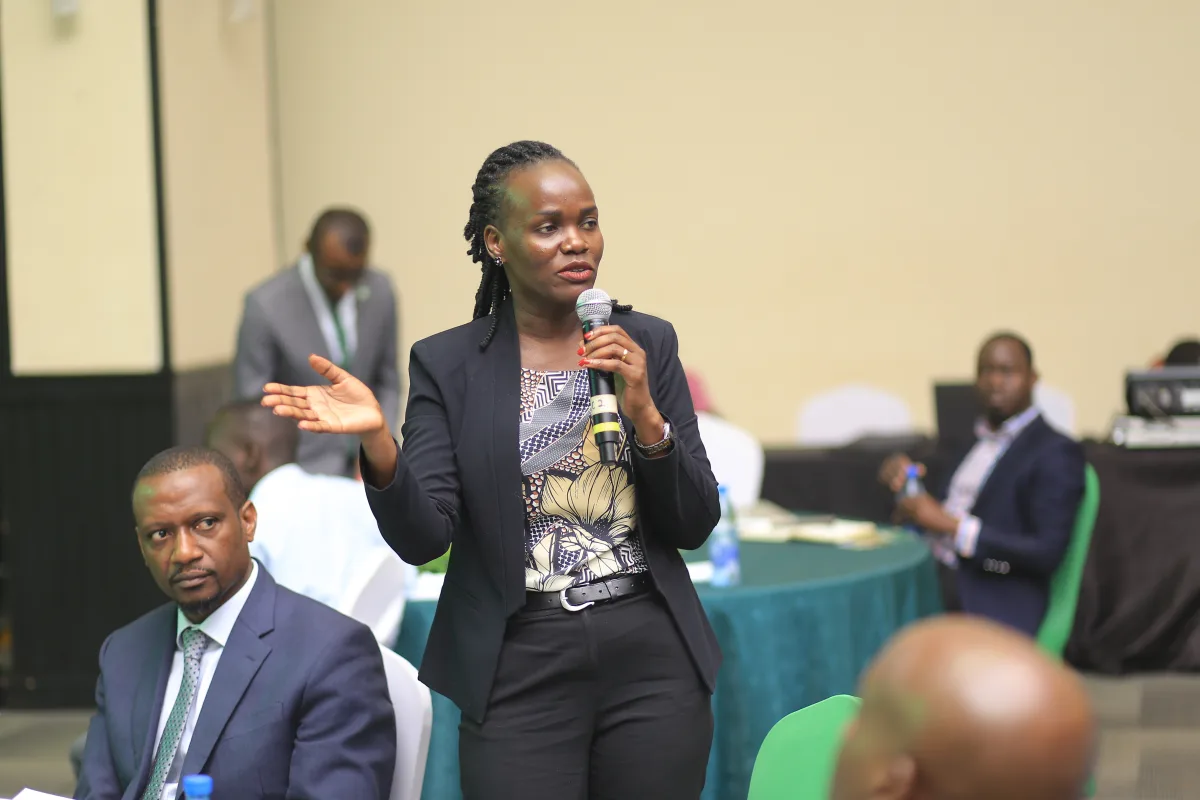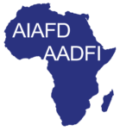Considerations of climate action have become a core business of the Uganda Development Bank. We hear from managing director Patricia Ojangole what this means in practice.

Uganda has updated its climate change plan, also known as its Nationally Determined Contributions (NDCs), to reflect its increased commitment to tackle the global challenge. Unveiled in 2023, the new plan aligns with the goals of the Paris Agreement and sets a target of reducing greenhouse gas emissions by 24.7% by 2030, up from the previous target of 22%. However, this ambitious goal comes with a hefty price tag that Uganda cannot afford on its own.
According to UNDP, Uganda needs about $28.1bn to implement its NDC, but can only generate 15% of this amount from domestic sources. This is where the Uganda Development Bank (UDB) steps in. The Kampala-based lender is actively seeking funding from both public and private sources to support Uganda’s climate mitigation and adaptation plans.
The Bank’s Managing Director, Patricia Ojangole, tells African Business that climate-related projects in Uganda have attracted more interest from partners who want to invest through the Bank.
“Our funding pipeline for climate-related investments has grown and we see more partners increasingly expressing interest to channel funding to the Bank.”
She says that the Bank has worked hard to strengthen its appeal to local and global partners, including going through the rigorous process of getting certified as a sustainable development finance institution through the Sustainability Standards and Certification Initiative (SSCI).
“Considerations of climate action have become a core business, and not a side business of the bank.”
The Bank recently launched the Climate Finance Facility (CFF) to implement its climate strategy and encourage private sector investment in climate action in Uganda.
“The CFF has helped us to mobilise more resources because it created a platform where different partners can put together resources that are specifically intended for green investments.” She emphasises that the funds mobilised through the CFF will be used for investment in projects that reduce vulnerability, strengthen resilience, and reduce emissions.
Unlocking global opportunities at COP28
Together with other members of the Bank’s senior management, Ojangole recently attended COP28 in the UAE to position the UDB and seek good partners that can join hands to advance Uganda’s ambitions. She says that some of the key outcomes of COP28 that will affect UDB’s climate strategy are the launch of the Loss and Damage Fund, and the rise in global commitments for the Green Climate Fund and Adaptation Fund, among others.
She notes that the launch of the Loss and Damage Fund, with about $700m in initial pledges, is a big step forward in helping Africa deal with the impact of climate change. This fund, which aims to help vulnerable countries recover from the damage caused by extreme weather events such as drought, floods, and rising seas, has been a long-awaited demand of developing nations facing the cost of the destruction caused by climate change.
“The Bank will strategically position itself to benefit from the Fund on behalf of Uganda. We will assess the funding arrangements and requirements of the Loss and Damage Fund and align with the same to support the country and its citizens to cope with the negative impacts that are already being experienced.”
The Green Climate Fund (GCF) received new pledges of $12.8bn at COP 28, with more expected to come. The fund helps developing countries reduce their greenhouse gas emissions and adapt to climate change. Other funds also got a boost, with over $174m for the Least Developed Countries Fund and Special Climate Change Fund, and nearly $188m for the Adaptation Fund.
According to Ojangole, the Bank is leveraging this global momentum to access concessional funding for Uganda. This type of funding, which includes grants and low-interest loans, can help attract private sector investment for climate projects.
“We have already applied to the Green Climate Fund for accreditation and are currently preparing an application to the Adaptation Fund for accreditation. These initiatives are to strategically position the Bank to access concessional funding for green investments in the country.”
CFF is focused on measurable impact
Ojangole points out that the CFF will play a central role in driving Uganda’s transition to a low-carbon and climate-resilient economy, and is as such, a key strategic area of focus for the Bank. “CFF has been mainstreamed in the Bank’s operations. Green financing is targeting the Bank’s priority sectors as outlined in our Strategic Plan. These sectors include Climate-smart Agriculture, Low Carbon Industries, Climate Resilient Infrastructure, Clean and Renewable Energy, Sustainable Waste Management and Eco-tourism.”
Ojangole explains that the CFF will prioritise projects that have the potential for scale, as well as those that have clear indicators of success. “The Bank is focusing on the measurable impact of the projects in terms of reducing vulnerability, strengthening resilience and minimising emissions from climate change.”
Enhancing project preparedness
A lack of viable projects for climate financing is a common problem not only in Uganda but across Africa. Ojangole recognizes this issue and says the bank is working to solve it in Uganda with its Project Preparation Facility. “Transforming ideas into projects requires extensive early-stage investment and technical skills, aspects that are not usually available for aspiring developers of, and investors in green projects. Project Preparation support is available to both public and private sector entities keen on investing in green projects or programs.”
The activities eligible for support under this offering include undertaking, updating and reviewing project feasibility studies, preparation of project master plans, legal and regulatory assessments, and financial assessments and structuring, among others.
Investing in digital
Ojangole believes that UDB’s investment in technology and digitisation will unlock the full potential of the agricultural sector, which is one of the Bank’s priority sectors. “We are supporting the development and deployment of technology tools of the 21st-century agriculture sector such as drones, sensors, robots, autonomous tractors and artificial intelligence.”
These investments include UDB’s recent pilot fintech solution called AgriConnect that provides digital financing for smallholder farmers in Uganda. The digital loans are processed entirely online – from application to disbursement – and the money is sent directly to the farmer’s e-mobile wallet. The Bank says that more than 18,000 smallholder farmers in Uganda will benefit from this innovative service.
Attractively positioned
Ojangole believes UDB is attractively positioned to attract local and international investors and development partners keen on supporting Uganda’s climate transition. “We are providing a vehicle through which Uganda as a country can attract climate funding because we can play across the value chain. We can create projects, mobilise appropriate funding, deploy and manage the funds and implement projects.”
UDB is on a mission to expand its funding sources and aims to secure an extra $1bn in the next three years. The government sees the Bank as a key player in the national development strategy and is ready to back it up with both capital and advocacy. The Bank has also attracted over $500m from various regional and international development partners. Its renewed emphasis on sustainability and climate financing aligns with Uganda’s goals to cut down greenhouse gas emissions more aggressively and speed up the climate transition. This should keep the momentum going.
Source: African Business
